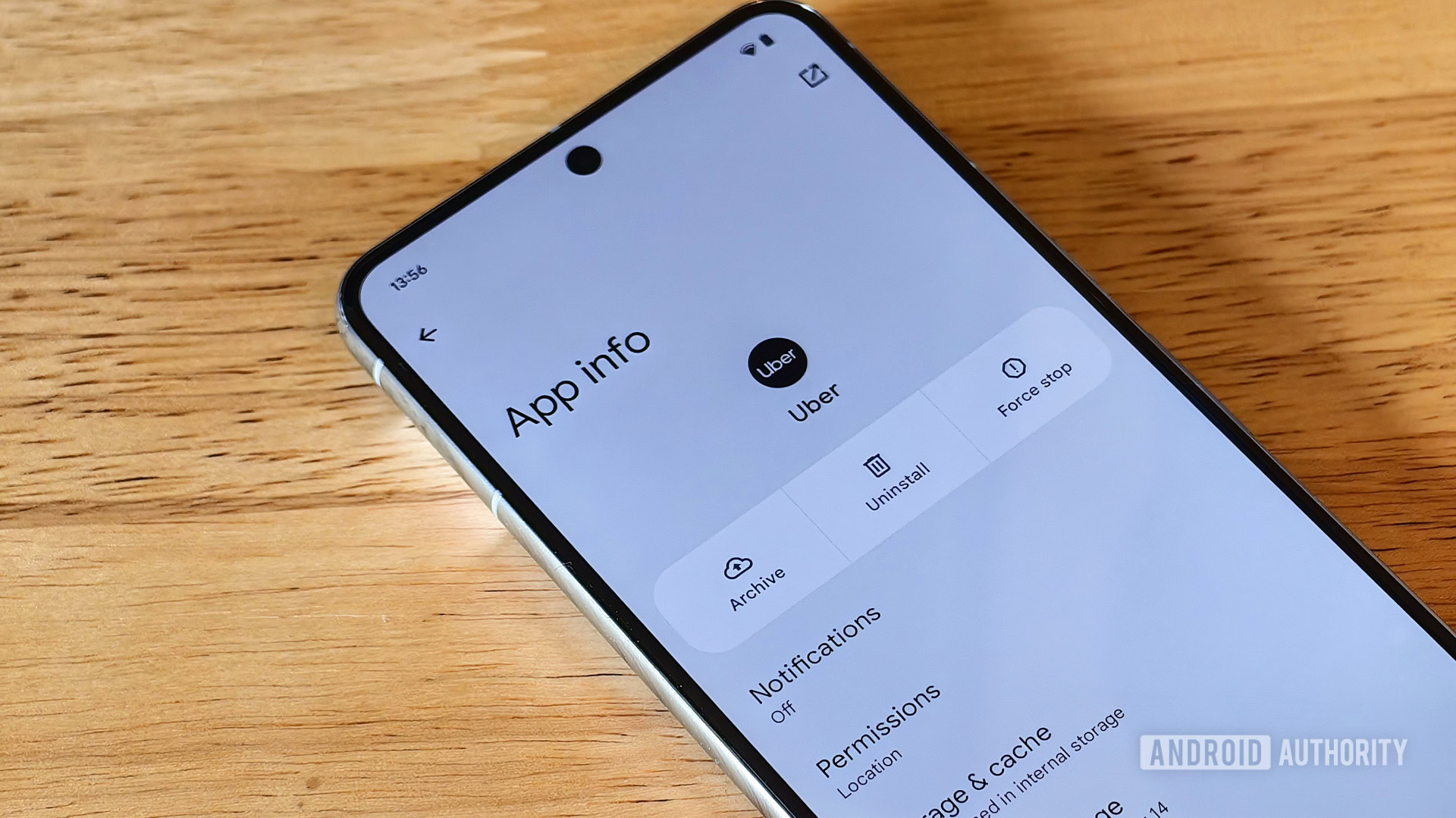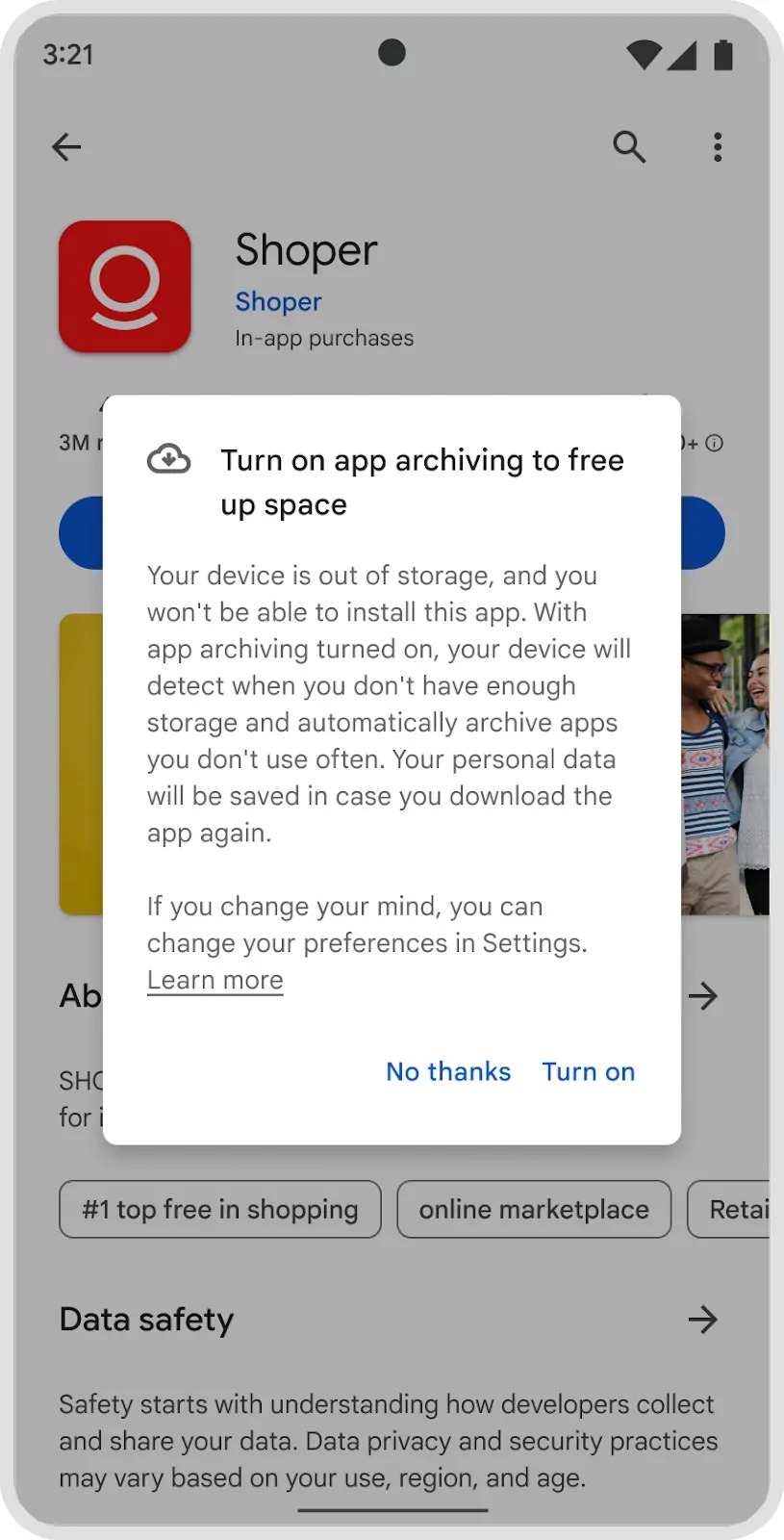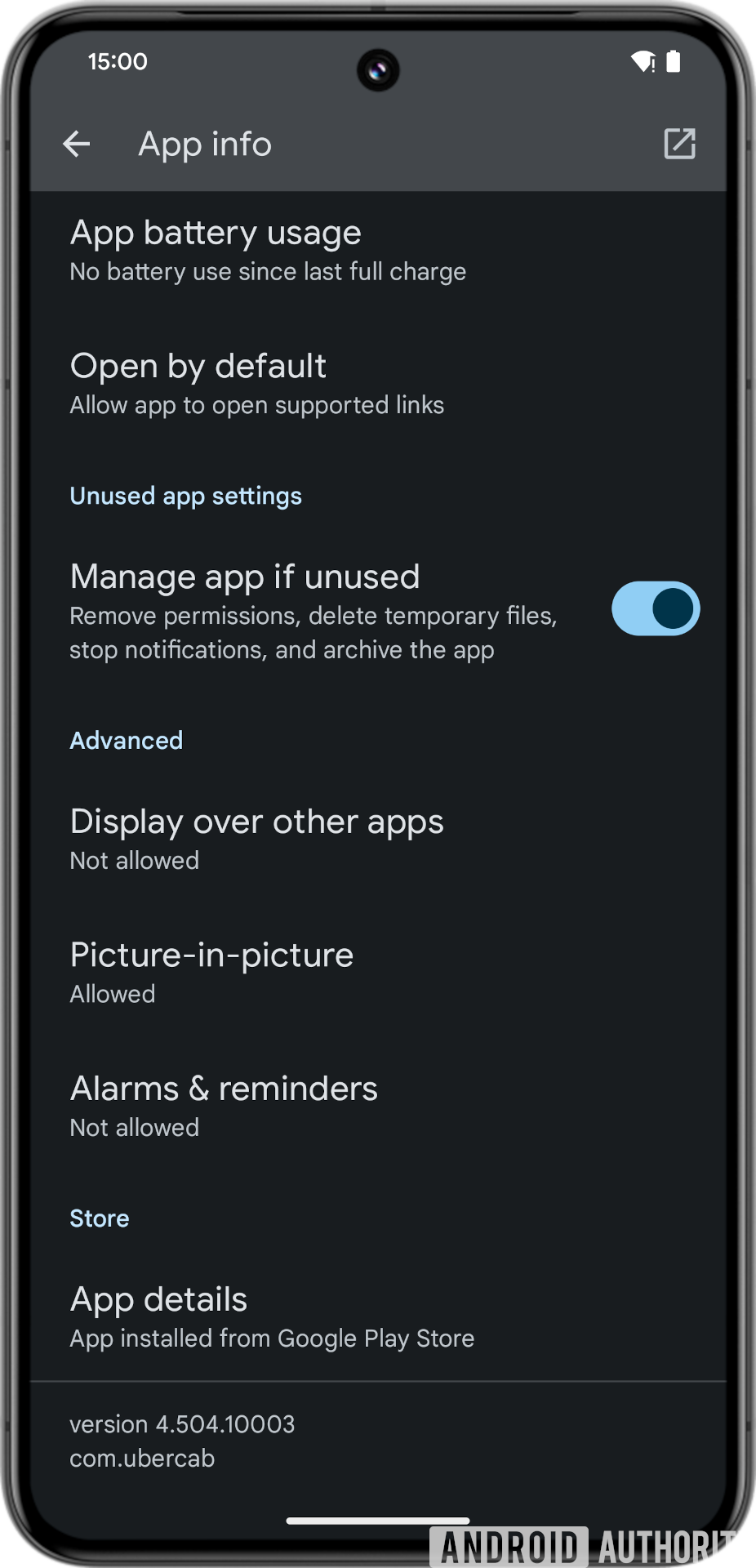Affiliate links on Android Authority may earn us a commission. Learn more.
Here's a first look at Android 15's built-in app archiving feature
Published onMarch 15, 2024

- We managed to fully enable Android 15’s app archiving feature to get a better look at it.
- This feature is only available via the Play Store right now, but Android 15 will bake it into the OS.
- This feature automatically archives apps you don’t use to free up space.
Flagship phones these days have enough storage space to easily hold hundreds of Android apps, photos, videos, and other files. However, a lot of people don’t buy high-end phones, and even those who do typically end up buying the base model which offers less storage. Uninstalling apps you rarely use can free up a lot of space, but it can cause headaches down the road when you need to reinstall and set them back up again. Fortunately, this won’t be much of a problem in Android 15, as you’ll be able to archive apps you aren’t using instead of uninstalling them.
Back in early 2022, Google unveiled an app archiving feature that they said would let users reclaim about 60% of the storage space taken up by an app. This works by “removing parts of the app rather than uninstalling it completely.” This feature takes advantage of the compartmentalized nature of the Android App Bundle format that Google Play uses to distribute apps. When developers generate an Android App Bundle to submit to Google Play, Google’s developer tools spit out an additional APK installation file called an “archived APK.”
What’s an archived APK, anyway?
An archived APK is just a trimmed-down version of the base app that is installed when Google Play archives an app. The archived APK is incredibly tiny as it just contains the original app’s icon (with a download logo overlaid on top) and code to make Google Play restore the original app when the icon is tapped. Because an archived APK has the same signature as the original app, it can be installed on top of the original without clearing any data.
App archiving currently exists as a feature of the Google Play Store rather than of Android itself. This means you can’t archive or restore apps from within Android’s settings. It also means that other Android app stores have to build their own UI and implementation of app archiving. In comparison, the app offloading feature in iOS is baked right into the OS’s built-in settings menu.

Turning on app archiving in Google Play. Source: Google.
While I was digging through the Android 14 QPR2 beta last month, I discovered hints that Google is working on adding OS-level support for app archiving. I even managed to surface an “archive” and “restore” button in the Settings app. After some more tinkering on the most recent Android 14 QPR3 Beta 2 release, though, I was able to fully enable Android’s built-in app archiving feature.
How will Android 15’s app archiving work?
In the video embedded below, I first open the Uber app on my Google Pixel 8 Pro to show that I’ve set it up and signed in with my account. I then open Uber’s app info page to show that it’s taking up 387MB of storage. Then I tap the “archive” button which overwrites the Uber app with an archived APK (the resulting app size isn’t shown in the video, but it’s brought down to 17.64MB, a ~95.4% decrease). Lastly, I tap on the Uber app’s home screen icon (tapping “restore” in the app info page would have also worked) and wait for Google Play to download and install the original app again. After that’s done, I launch the Uber app to show that I’m still signed into my account and that none of my data was lost during this process.
Android’s built-in version of app archiving will not only let you manually archive apps but also lets you choose whether to have the OS automatically archive apps that you don’t often use. If you toggle “manage app if unused” in an app’s app info page, then the OS will remove permissions, delete temporary files, stop notifications, and finally archive the app if it hasn’t been used in a while.

Android 15 can automatically archive apps you don’t use often.
Although I’ve demonstrated Android’s app archiving feature working with Google Play, there’s nothing preventing this from working with other Android app stores. Other Android app stores just need to support the Android App Bundle format and be able to handle the android.intent.action.UNARCHIVE_PACKAGE intent that the OS sends when the user taps on the archived app’s icon or the “restore” button in settings. The OS sends the UNARCHIVE_PACKAGE intent to the app’s “installer of record” which in this case happened to be the Google Play Store.
Hopefully, more Android app stores add support for app archiving now that Google is baking it into the OS. Speaking of which, although I was able to activate this feature in the latest Android 14 QPR beta, it’s highly likely that Google won’t roll it out until Android 15. This is because quarterly platform releases tend to never introduce major changes that might impact app developers, and this is one feature that will impact app store developers.